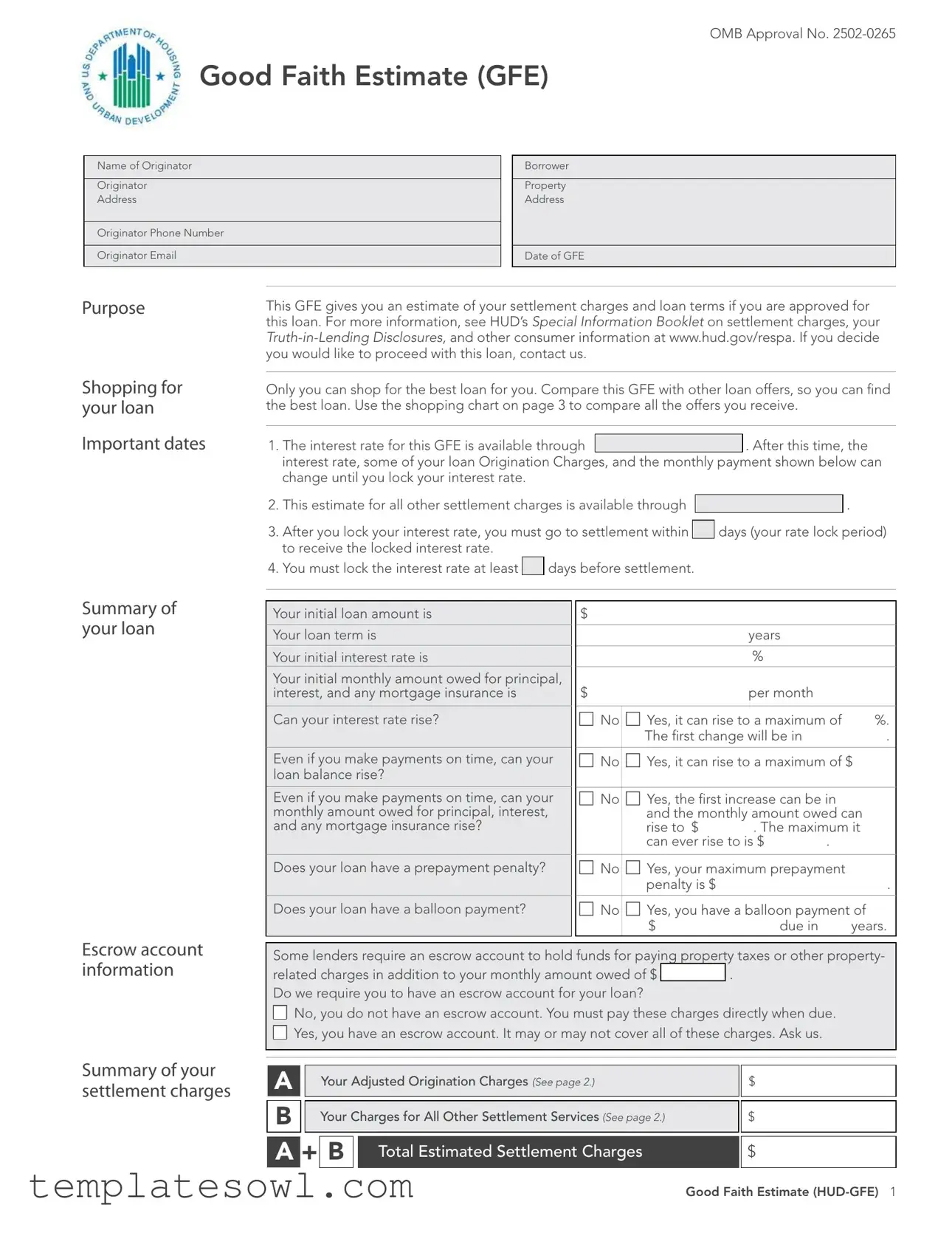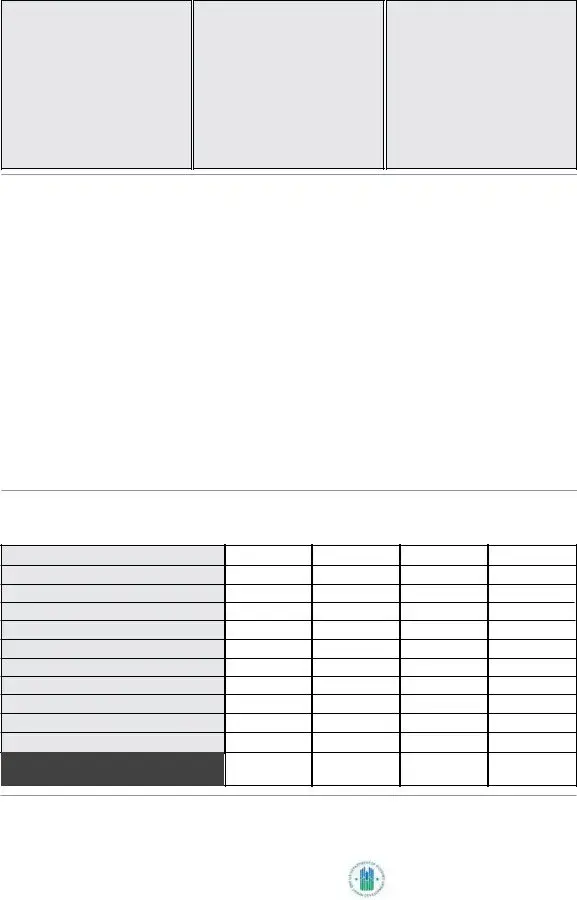Your Adjusted Origination Charges
1.Our origination charge
This charge is for getting this loan for you.
2.Your credit or charge (points) for the specific interest rate chosen
c The credit or charge for the interest rate of  % is included in “Our origination charge.” (See item 1 above.)
% is included in “Our origination charge.” (See item 1 above.)
c
 You receive a credit of $
You receive a credit of $  for this interest rate of
for this interest rate of 
 %. This credit reduces your settlement charges.
%. This credit reduces your settlement charges.
c You pay a charge of $  for this interest rate of
for this interest rate of  %. This charge (points) increases your total settlement charges.
%. This charge (points) increases your total settlement charges.
The tradeoff table on page 3 shows that you can change your total settlement charges by choosing a different interest rate for this loan.
A |
|
Your Adjusted Origination Charges |
$ |
|
|
|
|
Your Charges for All Other Settlement Services
3.Required services that we select
These charges are for services we require to complete your settlement. We will choose the providers of these services.
4.Title services and lender’s title insurance
This charge includes the services of a title or settlement agent, for example, and title insurance to protect the lender, if required.
5.Owner’s title insurance
You may purchase an owner’s title insurance policy to protect your interest in the property.
6.Required services that you can shop for
These charges are for other services that are required to complete your settlement. We can identify providers of these services or you can shop for them yourself. Our estimates for providing these services are below.
7.Government recording charges
These charges are for state and local fees to record your loan and title documents.
8.Transfer taxes
These charges are for state and local fees on mortgages and home sales.
9.Initial deposit for your escrow account
This charge is held in an escrow account to pay future recurring charges
on your property and includes c
 all property taxes, c
all property taxes, c
 all insurance,
all insurance,
and c
 other
other 
 .
.
10.Daily interest charges
This charge is for the daily interest on your loan from the day of your settlement until the first day of the next month or the first day of your
normal mortgage payment cycle. This amount is $
 per day
per day
for 
 days (if your settlement is
days (if your settlement is 
 ).
).
11.Homeowner’s insurance
This charge is for the insurance you must buy for the property to protect from a loss, such as fire.
|
Policy |
|
Charge |
|
|
|
|
|
|
|
|
|
|
|
|
|
|
|
|
|
|
|
|
|
|
|
|
|
|
B |
|
|
Your Charges for All Other Settlement Services |
$ |
|
|
|
|
|
|
|
|
|
|
|
|
|
|
|
|
|
|
A |
+ |
B |
|
Total Estimated Settlement Charges |
$ |
|
|
|
|
|
|
|
|
|



 . After this time, the interest rate, some of your loan Origination Charges, and the monthly payment shown below can change until you lock your interest rate.
. After this time, the interest rate, some of your loan Origination Charges, and the monthly payment shown below can change until you lock your interest rate.
 .
.
 days (your rate lock period) to receive the locked interest rate.
days (your rate lock period) to receive the locked interest rate.
 days before settlement.
days before settlement.
 . Do we require you to have an escrow account for your loan?
. Do we require you to have an escrow account for your loan?
 No, you do not have an escrow account. You must pay these charges directly when due.
No, you do not have an escrow account. You must pay these charges directly when due. 
 Yes, you have an escrow account. It may or may not cover all of these charges. Ask us.
Yes, you have an escrow account. It may or may not cover all of these charges. Ask us.
 % is included in “Our origination charge.” (See item 1 above.)
% is included in “Our origination charge.” (See item 1 above.)
 You receive a credit of $
You receive a credit of $  for this interest rate of
for this interest rate of 
 %. This credit reduces your settlement charges
%. This credit reduces your settlement charges for this interest rate of
for this interest rate of  %. This charge (points) increases your total settlement charges
%. This charge (points) increases your total settlement charges
 all property taxes,
all property taxes, 


 other
other 
 .
.
 per day
per day
 days (if your settlement is
days (if your settlement is 
 ).
).